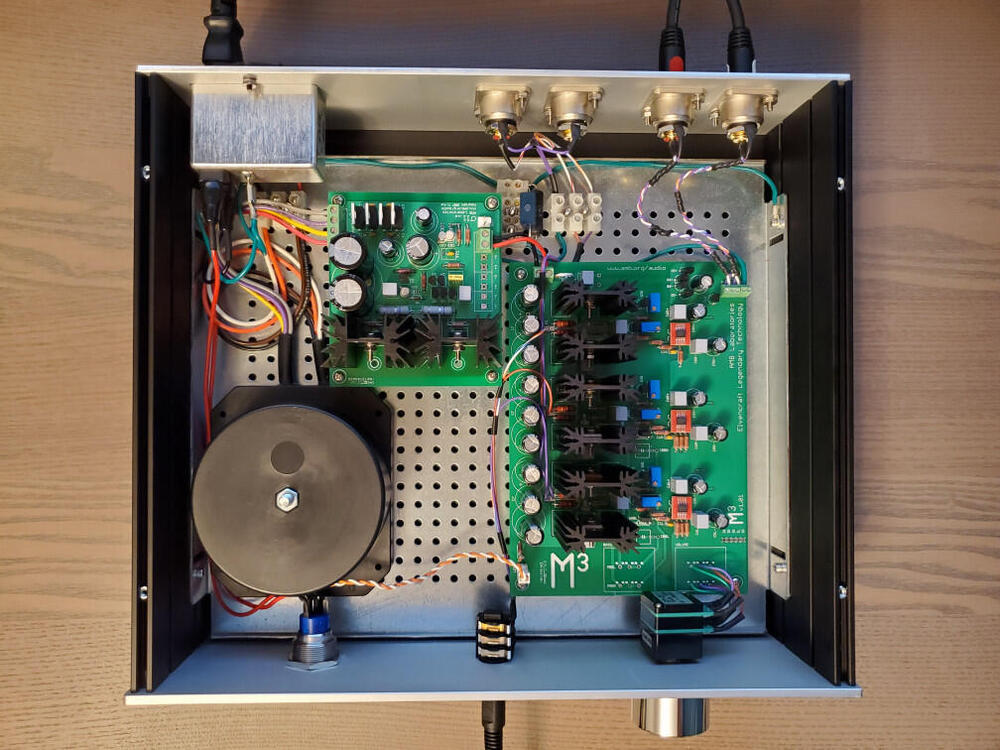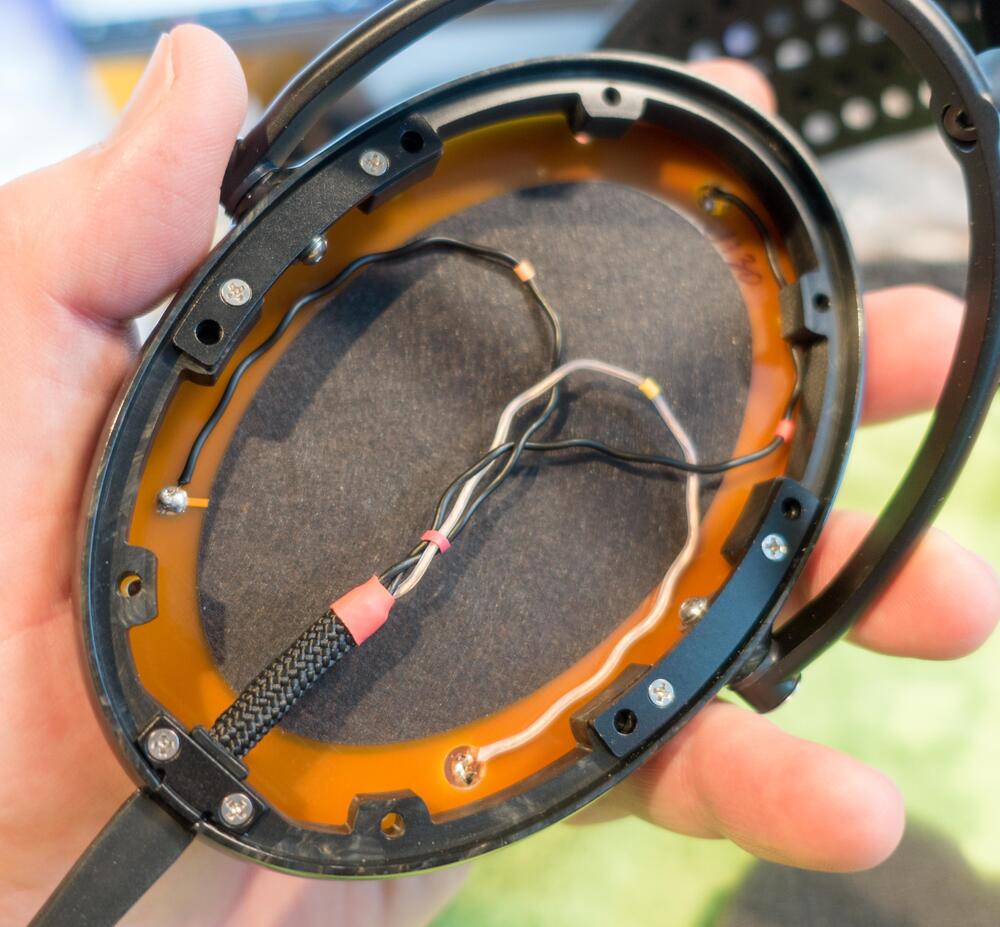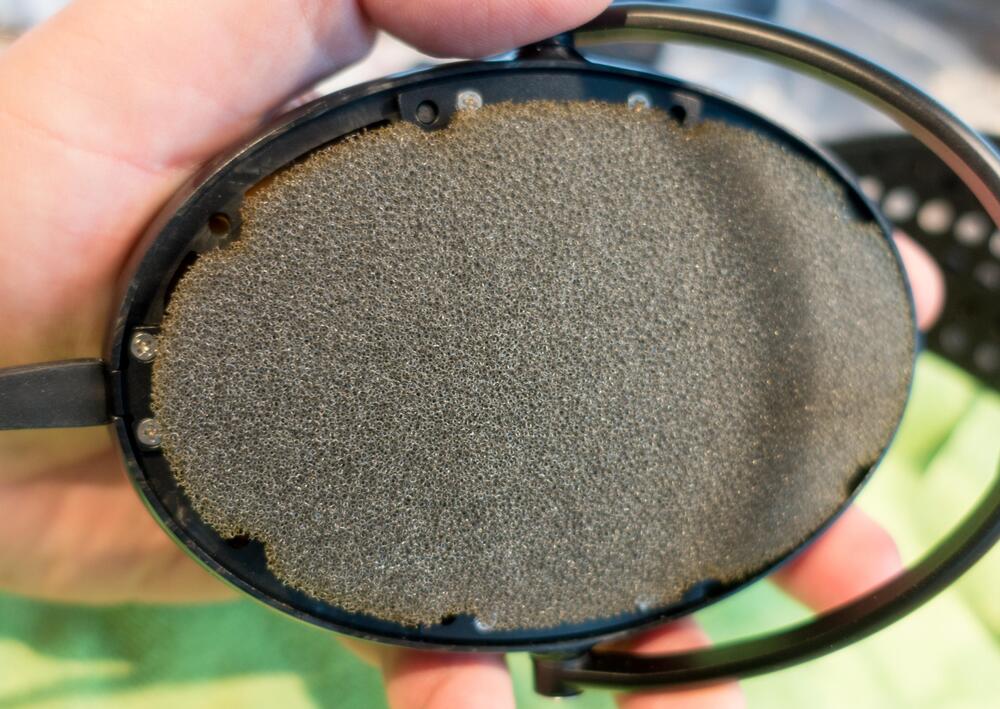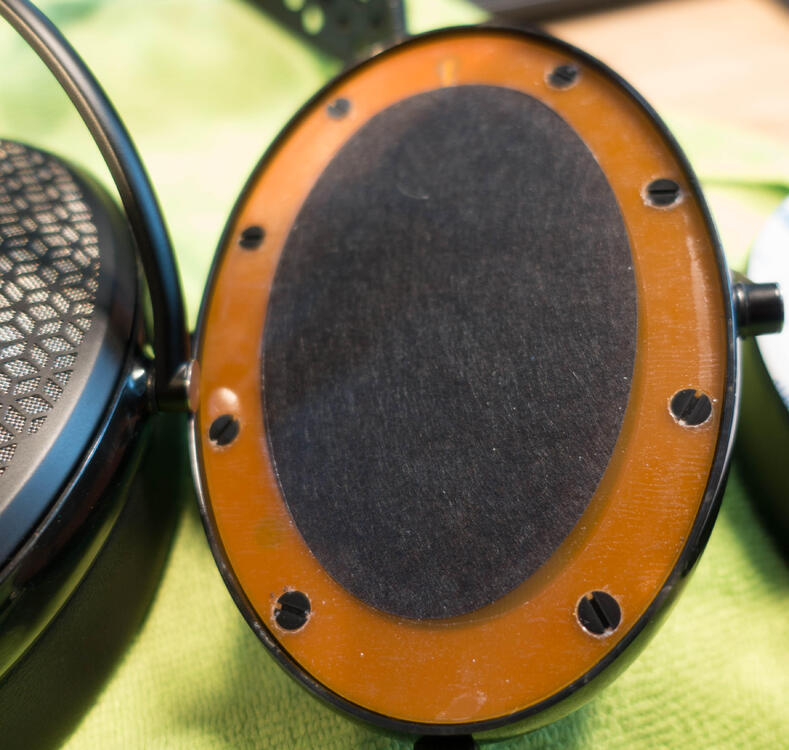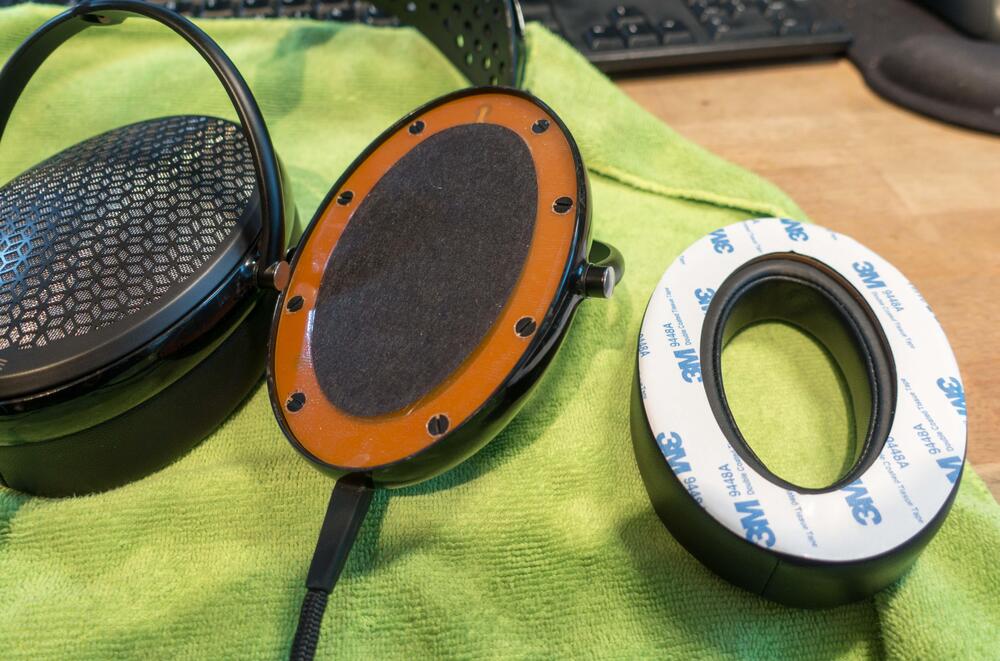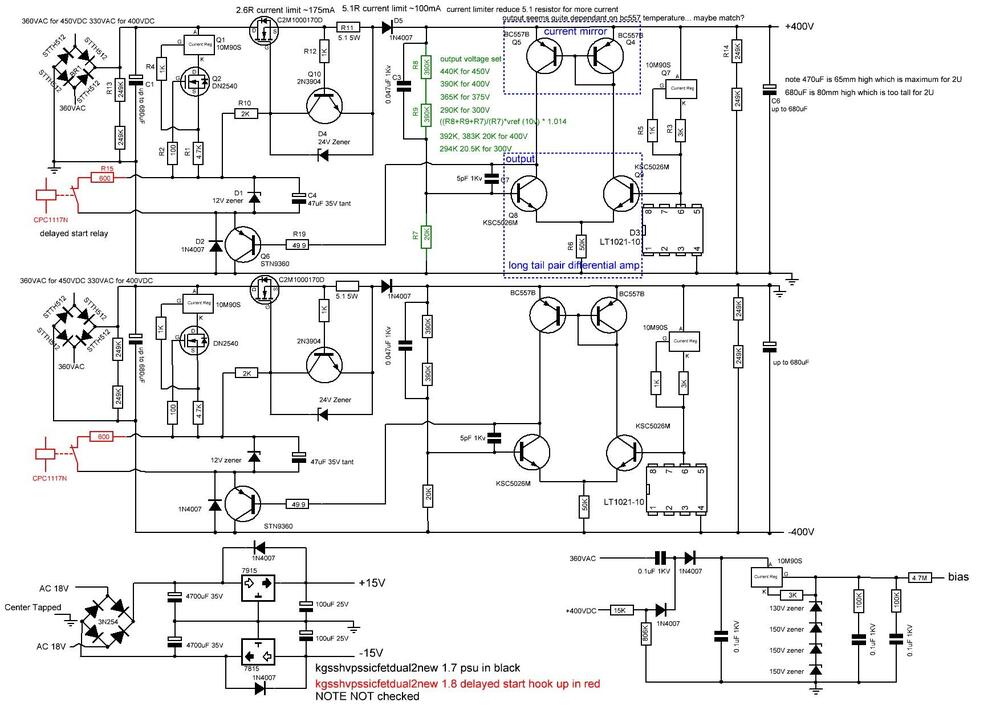Leaderboard
Popular Content
Showing content with the highest reputation on 09/21/2021 in all areas
-
I have finally completed my "return to the hobby" stack, by finishing up a recasing and upgrade of my 13-year-old M3. The design itself is 16 years old now, and it still has the same compromises from way back then..... but with a modern OPAMP, easy to drive phones and reasonable execution, I still think it sounds bloody marvellous. Highlights are a HiFi2000 galaxy case, FPE panels, ADA4627-1B OPAMPs, TKD 2CP2511 pot, 2" sinks and 110 mA output stage bias, complete electrolytic re-cap with Panasonic FR and Nichicon UHE, S11 at 27V, magnetically shielded SumR transformer (30VA, 12+12V), Cree zero-rec Schottky diodes, and a deliciously gaudy volume knob (so shiny, I had to edit out and hide my own reflection!). Sitting between the R-2R DAC and Focal Clear as my office rig, I'm a very happy camper.11 points
-
RIP to Peter, sounds like a good man to know. And so sorry for your loss and RIP to your dad, Beefy. Sucks not to have been be able to see him or be there in person, but wish for good memories to hold onto forever. We were lucky that my mother-in-law was local; everyone was in driving distance and she got to see her family, especially her great-granddaughter in person I think 3 times, before she passed.2 points
-
2 points
-
2 points
-
2 points
-
It's been a long week so not a lot of time to sit down and listen to the CRBN but when I've done so, they always deliver. No issues at all like the first set had and they are very comfy for a couple of hours or so. I'll try to sit down for a few hours straight but they are so light and the earpads so supple that I don't foresee any issues. It did take me a while to get used to the more diffused sound stage as I thought they were off balance a few times. Just the different presentation playing with my head... I'll take some more time until my final impressions but how about some teardown pics instead. Now do remember that this set was headed my way and Audeze knew I would tear it apart... so they were nice enough to not fully adhere the earpads. That's why they have the paper backing on them. First shot showing the gorgeous carbon shells. Earpads off showing the baffle and the nylon screws which secure the baffle to the back. The 3M adhesive they are using for the earpads is very strong so these are no easy headphones to get into. The earpads are very thick and some of the nicest I've ever seen so I don't foresee having to replace them anytime soon. Another shot showing the (phenolic?) baffle. Now remove the screws and the set comes apart, the baffle screws through the earcups and into the back piece. There is quite a bit of foam behind the drivers but it is very open. Audeze were shooting for a fairly high damping design so this makes sense. Here is the frame with the foam in place. That small dot falls off easily which is good, that means no adhesive in place to make a reflective surface inside the foam. The back cover is a very nice piece and I like the use of fine mesh to keep most things out of the cups Now remove the foam from the picture above and we have the back of the driver. They have gone for connections through the structure to the different elements unlike say Stax who take it all to one point. Nothing wrong with either way of doing things. Here you can also see the construction of the cable which is woven and it feel like it's two triple strands from the Stax plug, up through the cable split and into each cup. I do wonder how much capacitance braiding the cables like this does add to the system (a flat cable always be superior in that regard) but its similar to what Sennheiser do on the HE-1 and Mr. Speakers on the Voce. Far cry better than the crap Hifiman call a cable... on a 18k$ set of headphones though. Another shot the driver free of the earcup. Same thick woven material used for the dust covers front and back. Side profile showing just how thin the driver sandwich is and also its MRI safe roots are evident. Not a whole lot of metal in that, similar to what Sennheiser did with the HE series back in the day. The HE60 was just two pieces of extruded plastic, painted gold and then the mylar stretched onto the frame. Kinda funny to see this approach compared to what Stax are doing with the SR-X, ever more complicated stator designs whose benefits are not quite clear. Last but not least, the very nice plug on these. That is aluminum and then molded plastic... very nice indeed.2 points
-
Bohuslan Big Band plays Blue Note Available from Swedish public service company SVT, worldwide until 15. Dec. 2021. https://www.svtplay.se/video/31377250/jazzsommar-bohuslan-big-band-spelar-blue-note1 point
-
1 point
-
1 point
-
1 point
-
I still have a copy of your M3 BOM on my computer. This all would have been much harder without your efforts, so thanks for everything you've done over the years!1 point
-
I'd forgotten this thread was here..... My dad died over the weekend. Sudden exacerbation of a progressive lung disease. I wasn't able to get there because of travel restrictions (fuck you, COVID), but thankfully he was able to be off the ventilator for about a minute to talk to me. The saddest part is.... I went through all my photos to provide them for his memorial that I won't be able to go to (fuck you COVID), and there are only about 5 photos of him with my daughter. We only visited home once when she was 7 months old. My parents were supposed to visit me over here to see her again in mid-2020, but had to cancel when COVID hit (fuck you, COVID). In the context of this forum, my DIY equipment holds a little more meaning now. He didn't teach me much about being a man, but he did teach me how to solder.1 point
-
1 point
-
1 point
-
1 point
-
glad to hear, as I got both the 007A and the Carbon on the way, and still feeling a bit like "should've just waited and got a 007 mk I"1 point
-
1 point
-
My guide to golden reference high voltage (grhv) variants Here is my attempt at documenting some of the different GRHV board variations. (this will be work in progress for sometime) feel free to private message me with any additions comments, corrections etc. please note the schematic for version 1.5 has been reverse engineered by me from the gerbers and may contain error(s). location of the gerbers: https://drive.google.com/drive/folders/0B_iJFfZStuVhSE5nOHBVdTByR1k golden reference filename naming guide fat - boards which are wider and have less height than the non fat variants L bracket mounting only same as the non fat variants. fat with S as the last character of the filename - boards which are wider and have less height than the non fat variants and the height is about 6.3mm less than the fat variant. these boards also feature more screw hole options for the mounting the pcb to the case including an option of not using an L shaped bracket and mounting the transistors directly to the vertical face of a heatsink/side of the case. a silkscreen cut line is included to guide removal of the L bracket mounting roles to facilitate direct transistor to heatsink mounting. dual - has both positive and negative hv supply with additional bias and both positive and negative low voltage supplies on a single pcb left - has a single negative hv rail and both positive and negative low voltage supplies right - has a single positive hv rail and bias no new in the filename version - 1.5 boards high voltage starts instantly board has high voltage VAC power. Topology is much simpler then version 1.7 and 1.8 and therefore not considered golden reference. new in the filename actual golden reference boards with extensive post pass transistor regulation. new without sw in the filename- version 1.7 high voltage starts instantly board has high voltage VAC power. new with sw in the filename - version 1.8 or later boards same topology as 1.7 but high voltage will not start until dc power supplied to the cpc1117n no dual and no fat in the filename - minimal width and quite high. NOTE placement of the screw terminals for input VAC can vary considerably depending on if the board is a fat, fat S or non fat. Overview of the versions It is the extensive post pass transistor regulation that marks the golden reference out from the other power supply designs as such version 1.5 and earlier not classify as a golden reference since they lack any post pass transistor regulation. No details of versions before 1.5 or version 1.6 could be found in the gerber archives. Apparently pre 1.5 versions had on board heatsinks and ground lanes but there gerbers and not available in the google drive archive. No schematic could be found for version 1.5 although after reverse engineering it was found that the circlotronps.pdf is similar in topology but modified to support 900V output. No bill of materials could be found for version 1.5 and it is not certain what is the power rating for the larger resistors. All versions have the pcb tracks on the underside with no tracks on the top. All versions have no ground plane ALL versions have bleed resistors to help discharge the high voltage caps although version 1.5 and a few variants of 1.7 use a single high power resistor and the rest two 1/2W resistors in series. All versions have the same basic voltage regulator based low voltage positive and negative supplies All versions have the same bias supply although v1.5 has different resistor values. ALL versions use a LT1021-10 voltage reference All the versions 1.5, 1.7 and 1.8 use a C2M1000170D pass transistor All the versions use a 10M90S pre regulator although version 1.5 controls it with a zener string and 1.7 and 1.8 control with a DN2540. 1.7 and 1.8 are almost identical in topology although 1.8 does not automatically start the high voltages. DC must be applied to the CPC1117N to start. note 1.8 does not have provision for screw terminals for the DC to switch on the cpc1117n. versions 1.7 and 1.8 have more post regulation using a second 10m90s (which is not present in version 1.5) after the 1N4007 protection diode. version 1.5 uses a 10ohm current sense resistor and versions 1.7 and 1.8 use 5.1ohm by default. version 1.5 uses a 10K resistor to ground in the 3 series resistor chain to decide the output voltage, 1.7 and 1.8 use 20K to get 400V output. The other 2 resistors in the chain are the same for version 1.5 and version 1.7/1.8 version 1.5 uses two stn0214 which are replaced by two KSC5026M in v1.7/1.8 version 1.5 uses two stn9360 which are replaced by two BC557B in v1.7/1.8 Known non golden reference boards which are variations or predecessors to version 1.5 and golden reference variants NOTE These have not been looked at in detail by me or fully reverse engineered. The cyclotron power supply series follows a similar evolution to the golden reference. earlier cyclotron psus (circlotronps.PDF) use a variation of version 1.5 topology with modifications to bring the output up to 900V. However since it lacks any post pass transistor regulation it can not be considered a golden reference these psus do not have new in their name. The later cyclotron power supplies have the words new or newver in their name on quick inspection of the gerbers appear to be modifications for 900V of the version 1.7 power supplies, have post pass transistor regulation and may be considered golden reference variants. The filename conventions follows the guide above with dual, single, S and SWS versions available. circlotronhvpowerdualnew.zip appears to be derived from the version 1.7 topology with a similar complement of transistors. On the underside of the pcb there are two additional stn0214 transistors compared to the version 1.7 plus 3 mount points for a total of 500V worth of smd zeners. circlotronhvpowerdualnewer2.zip ditches the zener string and introduces another stn3960 and includes sw and sws variations. The kgsshv8g.pdf power supply appears to be an predecessor version of version 1.5. There are very close similarities in topology including no post pass transistor regulation. Current sense is still controlled by a 2n3904. The pre-regulator is 10m90s controlled by a zener string and a quad of transistors like the version 1.5. However the pass transistor is two parallel fqpf8n80c. The control transistors are 2sa1486 instead of stn9360 and 2sc3840 instead of stn0214. Both types of control transistor are no longer in production and hence the conclusion this is older than version 1.5. Apparently these boards are classified as KGSSHV ------------------------------------------------ Version 1.5 boards ------------------------------------------------- predecessor to the golden reference with no post pass transistor regulation the board uses a single high wattage bleed resistor for each cap uses multiple stn9360s, stn0214s uses a serial zener string for to control the 10m90s pre regulator. LT1021-10 voltage reference based single sided board kgsshvpssicfetdual2.zip this has both positive and negative rails, a simple voltage regulator based low voltage positive and negative supply and 580V for stax headphones bias board size approx. width 152.7mm height 165mm silkscreen revision 1.5 kgsshvpssicfetsingle2.zip this has a single rail identical to the kgsshvpssicfetdual2 in topology and 580V for stax headphones bias board size approx. width 76.5mm height 165mm silkscreen revision 1.5 ------------------------------------------------ Version 1.7 boards ------------------------------------------------- considered the first known golden reference board version (given the lack of information on version 1.6) has extensive post pass transistor regulation. the board uses two serial bleed resistors for each cap uses a single stn9360s and multiple BC557B and KSC5026M uses dn2540 and 10m90s for stage early voltage control for the input to the c2m1000170D LT1021-10 voltage reference based double sided board kgsshvpssicfetdual2new.zip this has both positive and negative rails, a simple voltage regulator based low voltage positive and negative supply and 580V for stax headphones bias board size approx. width 152.7mm height 165mm silkscreen revision 1.7 kgsshvpssicfetsingle2new.zip this has a single positive rail identical to the kgsshvpssicfetdual2new in topology and 580V for stax headphones bias board size approx. width 76.5mm height 165mm silkscreen revision 1.7 single bleed resistor for each cap kgsshvpssicfetsinglenewleft.zip this has a single negative rail identical to the kgsshvpssicfetdual2new in topology and has a simple low voltage positive and negative regulators based supply board size approx. width 76.4mm height 165.3mm silkscreen revision 1.7 kgsshvpssicfetsinglenewright.zip this has a single positive rail identical to the kgsshvpssicfetdual2new in topology and bias supply board size approx. width 76.4mm height 165.3mm silkscreen revision 1.7 kgsshvpssicfetsinglenewleftfat.zip this has a single negative rail identical to the kgsshvpssicfetdual2new in topology and has a simple low voltage positive and negative regulators based supply board size approx. width 138.7mm height 103.1mm silkscreen revision 1.71 kgsshvpssicfetsinglenewrightfat.zip this has a single positive rail identical to the kgsshvpssicfetdual2new in topology and has a 580v stax bias supply board size approx. width 138.6mm height 103.1mm silkscreen revision 1.71 kgsshvpssicfetsinglenewleftfatS.zip this has a single negative rail identical to the kgsshvpssicfetdual2new in topology and has a simple low voltage positive and negative regulators based supply has more mounting options for the pass transistor, 4 holes for mounting to a case and can be used with or without an L shaped bracket board size approx. width 138.7mm height 98.6mm (slightly less height than the fat non S version silkscreen revision 1.71s kgsshvpssicfetsinglenewrightfatS.zip this has a single positive rail identical to the kgsshvpssicfetdual2new in topology and has a bias supply has more mounting options for the pass transistor, 4 holes for mounting to a case and can be used with or without an L shaped bracket board size approx. width 138.7mm height 98.6mm (slightly less height than the fat non S version silkscreen revision 1.71s ------------------------------------------------ Version 1.8 boards ------------------------------------------------- same topology as version 1.7 making this a golden reference board adds a cpc1117n and 600ohm resistor to control high voltage startup the high voltage will not start-up automatically. This negates the need for a external relay for delayed start-up and just requires dc power to be supplied to the cpc1117n (not present in earlier versions) for the high voltage to start-up. if you want the board to power up instantly simply omit the 600ohm resistor and cpc1117n and it will act just like the version 1.7 instant start boards. boards same size as the equivalent version 1.7 pcbs silkscreen 1.8 there does not seem to be a dual version of this board kgsshvpssicfetsinglenewleftSWS.zip this has a single negative rail almost identical to the kgsshvpssicfetdual2new in topology and has a simple low voltage positive and negative regulators based supply board size approx. width 76.4mm height 165.3mm silkscreen revision 1.8 kgsshvpssicfetsinglenewrightSWS.zip this has a single positive rail almost identical to the kgsshvpssicfetdual2new in topology and has a bias supply board size approx. width 76.4mm height 165.3mm silkscreen revision 1.8 kgsshvpssicfetsinglenewleftfatSW.zip this has a single negative rail almost identical to the kgsshvpssicfetdual2new in topology and has a simple low voltage positive and negative regulators based supply board size approx. width 138.7mm height 103.7mm silkscreen revision 1.8 kgsshvpssicfetsinglenewrightfatSW.zip this has a single positive rail almost identical to the kgsshvpssicfetdual2new in topology and bias based supply board size approx. width 138.7mm height 103.7mm silkscreen revision 1.8 kgsshvpssicfetsinglenewleftfatSWS.zip this has a single negative rail almost identical to the kgsshvpssicfetdual2new in topology and has a simple low voltage positive and negative regulators based supply has more mounting options for the pass transistor, 4 holes for mounting to a case and can be used with or without an L shaped bracket board size approx. width 138.7mm height 98.6mm (slightly less height than the fat non S version silkscreen revision 1.8 kgsshvpssicfetsinglenewrightfatSWS.zip this has a single positive rail almost identical to the kgsshvpssicfetdual2new in topology and has a bias supply has more mounting options for the pass transistor, 4 holes for mounting to a case and can be used with or without an L shaped bracket board size approx. width 138.7mm height 98.6mm (slightly less height than the fat non S version silkscreen revision 1.81 point
-
This morning I was notified that a dear friend and fellow plowedster died of complications from an infection while he was waiting for a kidney transplant. Peter Silver DDS was a gent and funny man. I shared many a dram and story with him. I met Peter at A11, my first Ardbeggeddon gathering. We ended up sitting next to each other many times. Early on he handed me a sealed bottle and asked if I would open it for him. No problem, I thought, and quickly opened it for him and handed it back. A little while later he asked me to open another, then again later in the evening. I didn't think much of it. The next morning when I sat down next to him again and he soon handed me a sealed bottle to open. This time I smiled, knowing this was a subtle and fun hazing joke to himself. I happily opened it for him along with several other bottles that day. As the evening session started, I handed a sealed bottle to him, 'Peter, could you open this for me?', I said in a very offhand manner. A big smile and chuckle came over his face. He happily opened the bottle. We were locked in... Tis a sad day. But great memories of a generous man.0 points






